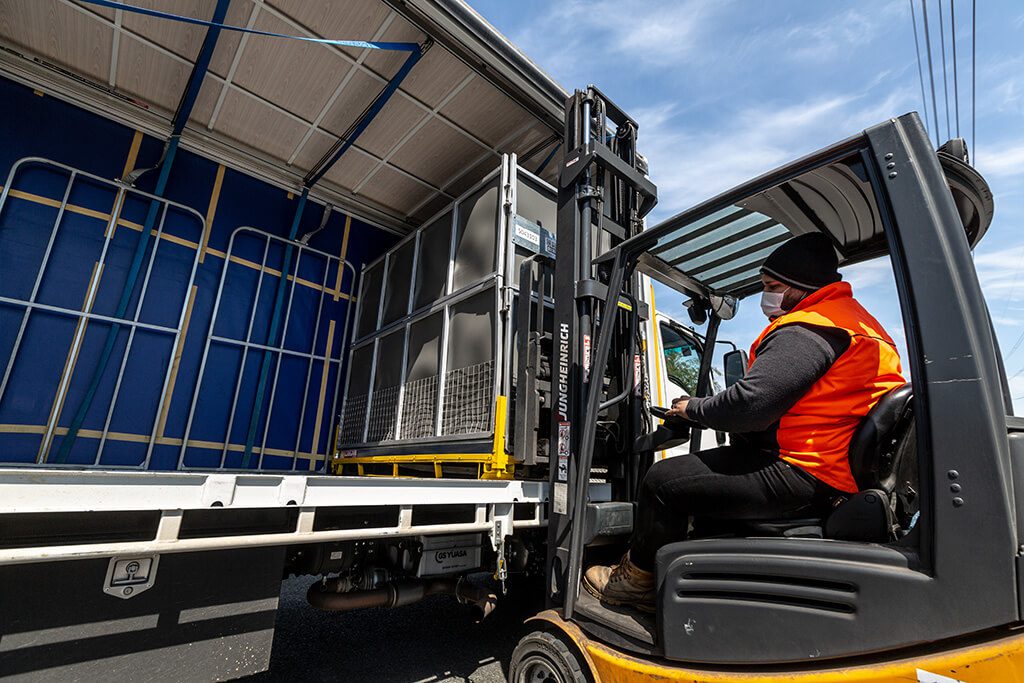MHD sits down with Craig Stanford, Director of Active Supply Chains, to talk about the power of the e-commerce consumer, and the impact of the Internet of Things (IoT).
While we’ve all heard of the “keyboard warrior”, Craig Stanford, Director of Active Supply Chains, says that much of the future of success in the e-commerce space will depend on the “Google ratings warrior”.
The empowerment of consumers in rating products and services means a brand can suffer grave damage – or build quite a reputation – almost overnight, depending on how all aspects of their supply chain are handled in getting the product to a consumer.
“For people who have been in supply chains a long time, e-commerce is quite different from what they are used to,” Craig says. “It has a very strong speed to market focus, it has a very strong focus on predictability, and the consumer is more empowered than ever to direct immediate and often brutal feedback at the service or product, as many consumers don’t differentiate between the two.”
So, what are some of the key things supply chain professionals must consider in this consumer-centric environment?
“With e-commerce more companies are looking at holding stock forward,” says Craig. “Fulfilment centres can’t just be in Melbourne or Sydney anymore. That may have been convenient in an earlier era, because of the big population centres and so forth. But now companies are looking at holding stock forward in places like Perth, while perhaps not even holding stock in places like Sydney, which might be controversial from a traditional perspective. Certainly, you can hold stock in places like Melbourne, Brisbane, and Perth, and get same day or next day delivery to roughly 85 per cent of the Australian population. However, as the consumer gets more demanding and new same day and 4-hour offerings come into the market, holding decentralised stock forward and close to the consumer will become increasingly critical”
Craig says that using Australian sources where possible is another way in which businesses can improve their resilience, and thus their reliability in the eyes of the end-point consumer.
“On a broader scale, I think the last year has drawn attention to the necessity of diversifying supply points on a global scale,” he says. “We all know that people can be over-reliant on one country or one sourcing point. So, I think companies will look more and more towards diversifying their inbound supply chains and where they source from. Speaking for myself, I’m certainly for companies co-sourcing with an Australian supplier where possible so as to give more resilience to their supply chains and reinvesting in our great country.”
“Additionally, I think another important thing to consider infrastructure-wise is how you integrate your systems,” Craig says. “It’s not good enough these days in e-commerce for an online retailer to say: ‘We despatch within 48 hours.’ As a consumer, you don’t really care. You want to know when you’ll get it, which has a lot more to do with geography, transport modes available and other factors. That’s where the need for closer fulfilment centres comes in, and the ability for retailers to tell from your street address when you will actually receive your order.”
The Power of IoT
Craig says that IoT has many current and potential uses in tracking supply chains and guaranteeing successful product delivery.

We at Active Supply Chains have deployed IoT trackers from Thinxtra for a major automotive parts and accessories client which connect to Thinxtra’s national 0G [Zero G] Network to track the very expensive stillages that protect automotive freight. We can remotely track the location of these stillages within about a ten metre accuracy. We use an IoT solution from our partner Loscam which connects to the national Thinxtra 0G Network. It has worked better than I could ever have imagined.
Craig Stanford, Director of Active Supply Chains
Craig believes that the same technology could be deployed for home deliveries – such as groceries or fresh meals. “The point is that they need to be temperature controlled,” he says. “So, with IoT you could imagine putting a device such as an RFID device in every esky, put the esky in the vehicle, and the vehicle has an IoT device in it which links into 0G or 4 or 5G for that matter. Let’s say the IoT monitoring device shows no temperature breach – the sender will be very happy that they haven’t sent a consumer something which has gone off. But where there is a temperature breach, then a company has the opportunity to stop it, check it, tell the customer there’s been a delay, and tell them when they can expect a replacement item. This means more integrity for the brand, and as a consumer it gives you more confidence there has been no break in the cold- or temperature-chain.”
And as Craig says, ensuring the integrity of the product is paramount in this era of Google ratings warriors: “Because if something goes seriously wrong with storage of perishables, for example – and a temperature breach leads to disappointed, or worst case sick, customers – then your brand can be smashed.”
Yet, while Craig sees great potential in tracking the location and condition of goods through the IoT, he notes that uptake is just starting at scale.
“I think the value of it is high, but people have to move their mindset. The e-commerce model is largely based on a percentage of cost of goods sold. A lot of people in the retail space don’t intimately understand the cost of logistics components, but they do understand the percentage it represents as part of their cost of goods. If you’re in a market where you’re always pushing to be price competitive, then investing in tracking or monitoring technologies can still seem like an unnecessary cost.”
He argues that retailers will need to change their mindsets to realise the value of IoT in combination with other technologies such as RFID. Or it will simply be consumer driven, as consumers increasingly demand proper tracking and controls over products from retailers.
“Certainly a change of mindset was needed on the part of our organisation when we decided to track stillages with the Loscam Track & Trace IoT solution using the 0G Network,” Craig says. “That cost us money and it cost our client money. The payoff was that we didn’t lose these expensive stillages, we could reduce the size of the pool and our client’s costs, and we got better relationships due to improved reliability. But that investment took a leap of faith that the technology would pay off.”

IoT and the Chain of Custody
The value of IoT might seem obvious in terms of basic business-to-business or last-mile verification purposes, but Craig foresees greater importance for IoT on the horizon in ensuring the integrity of supply chains and chains of custody. Something that the end customer already demands.
“Increasingly we are having conversations around slave labour, conversations around ethical trade,” he says. “The US and Europe have been taking firmer positions, and I think Australia will increasingly take a firmer line on these issues, too. Increasingly the ‘last mile’ won’t be important unless the first thousand miles is done right. If we have an ethical product and its chain of custody then destroys its ethical component – or destroys its carbon footprint aspirations, to take another example – then the product loses its value in that dimension.”
That is why the ability to track the chain of custody using IoT and Thinxtra’s 0G Network will only get more important, Craig says.
“Again we return to the notion of the Google-ratings warriors and the demands they will be making on the receiving end in terms of ethical, environmental, or any other kind of chain-of-custody consideration,” he says. “The more you have under control in your first thousand miles, the easier you’ll be able to answer those questions from the consumer, and you’ll have the right product at the right time for that last mile. You won’t be caught flat-footed by the new demands of a changing market.”

We know that, for any organisation, deploying IoT solutions at scale for the first time can be complex and challenging. You just don’t know what you don’t know. This is why we focus so much on working closely with our clients and partners to simplify the process and make the business case work. Craig Stanford, his team at Active Supply Chain and partner Loscam are setting a great example for unlocking the value in a collaborative and customer centric way.
Loic Barancourt, co-founder and CEO of Thinxtra, The IoT Telco


